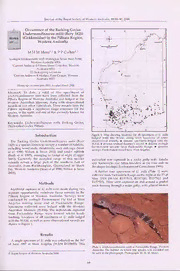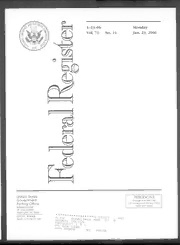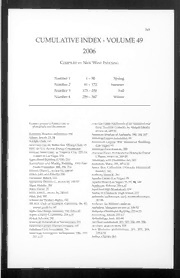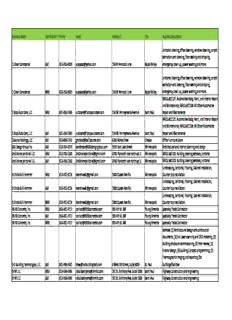
Page 1/115 Title Fingermark Detection using Nanoparticles Authors Andy BECUE Antonio A ... PDF
Preview Page 1/115 Title Fingermark Detection using Nanoparticles Authors Andy BECUE Antonio A ...
Page 1/115 Title Fingermark Detection using Nanoparticles Authors Andy BECUE Antonio A. CANTU Affiliations Andy BECUE, Ph.D. Ecole des Sciences Criminelles - Institut de Police Scientifique University of Lausanne – Building Batochime CH-1015 Lausanne-Dorigny Switzerland Antonio A. CANTU, Ph.D. (Retired) United States Secret Service, Forensic Services Division Scientific Consultant 3013 Seven Oaks Place Falls Church, VA 22042 U.S.A. Page 2/115 Table of contents 1.0. Introduction 2.0. Nanoparticles – Structure and properties 2.1. Synthesis of monodisperse spherical nanoparticles 2.1.1. Synthesis of gold colloids using reduction agents 2.1.2. Synthesis of semiconductor nanocrystals by thermal decomposition 2.1.3. Synthesis of silica nanospheres following a sol-gel process 2.2. Stability of nanoparticles in solution 2.2.1. van der Waals interactions 2.2.2. Electrostatic repulsion 2.2.3. Steric hindrance 2.3. Optical properties of nanoparticles 2.3.1. Gold nanoclusters 2.3.2. Quantum dots 2.3.3. Silica nanospheres 2.4. Surface functionalization 2.4.1. Functionalization of gold nanoparticles 2.4.2. Functionalization of quantum dots 2.4.3. Functionalization of silica nanoparticles 2.5. Health and safety issues 3.0. Affinity for the papillary secretions 3.1. A glance on the composition of secretion residue 3.2. Electrostatic interaction 3.2.1. General principles – Origin and nature of the charge on secretions 3.2.2. Electric charge aspects of the gold sol (description of the MMD in terms of zeta potential/size/charge) 3.2.3. Electrostatic aspects of the silver physical developer 3.3. Lipophilic interaction 3.3.1. Traditional fingermark powders 3.3.2. Powders containing enhanced nanopowders 3.3.3. Illustrated example – Alkane-modified metal nanoparticles 3.4. Chemical reaction 3.4.1. General principles 3.4.2. Illustrated example – Amide bond formation 4.0. Visualizing fingermarks using nanoparticles 4.1. Aluminium-based nanoparticles 4.2. Cadmium-based nanoparticles 4.3. Europium-based nanoparticles 4.4. Gold-based nanoparticles 4.5. Iron-based nanoparticles 4.6. Silica-based nanoparticles 4.7. Silver-based nanoparticles 4.8. Titanium-based nanoparticles 4.9. Zinc-based nanoparticles 5.0 Conclusions 6.0 Acknowledgments 7.0 References Page 3/115 1.0. Introduction The terminology that is used in this chapter clearly differentiates a "fingerprint" from a "fingermark", by following the definitions proposed by Champod and Chamberlain in a recent publication [1]. A fingerprint is defined as "a reference impression from a known sample taken with cooperation and under controlled conditions either using an inking process or an optical device […] Because of their pristine acquisition conditions, prints are a near perfect representation of the friction ridge skin" (from [1]). A fingermark is defined as an impression, generally composed of sweat residues, that is "left adventitiously when one touches an object without gloves or foot wear. By the uncontrolled nature of the deposition, marks are often of varying quality compared to the prints" (from [1]). It should be noted that the distinction between fingerprint and fingermarks was already mentioned in another book [2], with a fingerprint defined as "a record or comparison print taken for identification, exclusion, or database purposes", and fingermarks as "traces left (unknowingly) by a person on an object". A fingermark constitutes one of the most powerful traces that can be exploited as evidence of identity of source, since it constitutes a partial representation of the ridge skin pattern of an individual's finger. Three kinds of fingermarks may be found during an investigation (being at a crime scene or on a related item): visible, plastic, and latent (invisible). The first two kinds are directly visible to the investigators and require only a camera and optical skills to record them. The last kind is the most common form encountered and corresponds to invisible marks, which require the application of detection techniques to allow their visualization. Their detection constitutes a major and continuous challenge for forensic scientists and investigators. As a consequence, numerous efficient techniques have been developed over several years to detect latent fingermarks on various substrates [3,4]. The books by Lee and Gaensslen and by Champod and coworkers offer two thorough and complete summaries about Page 4/115 fingerprints, the composition of the secretion residue, and the existing fingermark detection techniques [2,5]. It should also be noted that most of the techniques able to detect fingermarks are also suitable to detect marks that emerge from the contact of a surface with other parts of the body presenting papillary ridges (e.g., palms and foot). Detection techniques are generally classified according to the type and state of substrate and secretion that are targeted. For example, latent fingermarks on porous surfaces may be detected using 1,2-indanedione or ninhydrin (non-exhaustive list); on non-porous surfaces, cyanoacrylate fuming (followed by a staining step) or vacuum metal deposition give excellent results; physical developer or Oil Red O are applied in case of wet fingermarks; and blood- contaminated marks require the use of specific blood-reagents (e.g. Acid Yellow 7 or Acid Violet 17), just to cite a few of several situations encountered. However, a more practical way of classifying the methods, especially when working on the improvement of existing ones or the development of new ones, is to do it by their mode of interaction with the secretion components. If we exclude optical methods from this classification, we can distinguish the methods driven by (1) chemical reactions (e.g., 1,2-indanedione, ninhydrin, and blood- reagents), (2) physico-chemical mechanisms (e.g., physical developer, multimetal deposition, and cyanoacrylate fuming), and (3) physical processes (e.g. powder dusting and powder suspensions). Each interaction mode possesses its advantages and drawbacks in terms of efficiency and sensitivity according to the latent secretions, the nature of the substrate, and various other parameters. Despite the dozens of techniques currently available to the investigators, some serious issues remain: for example, some surfaces are considered as "problematic", with no or few possibilities to detect fingermarks on them; very faint marks may not be detected using Page 5/115 conventional techniques; and environmental conditions (humidity, heat, light) may have a detrimental effect on the latent residue, decreasing the efficiency of the existing methods. The last 20 years have shown the need to develop new techniques, and to improve existing ones, by widening the application fields and increasing the global sensitivity and success rate of detection. Among the existing improvement possibilities, a promising alternative to conventional techniques exploits nanoparticles or nanostructured materials, which have recently made great strides within forensic research laboratories (see §4) [3,6-8]. The following definitions from the field of nanotechnology (e.g., see references [9-12]) will be applied throughout this chapter: - Materials with morphological features smaller than 100 nm, in at least one of their dimensions, are referred to as nanomaterials. Nanoparticles constitute a category of nanomaterials that are nanoscale in three dimensions. Nanostructures are nanoscale structures on the surface of materials (not necessarily nanomaterials). - Nanoscience, or nanotechnology, is that part of science (or a technique) concerned with how nanostructures and nanomaterials are designed, fabricated and applied to specific and well- defined uses. Given such a wide definition, nanotechnology is to be found at the interface between chemistry, biology, physics as well as material science, since it combines synthetic steps and chemical assemblies, solubility and stability issues, optical and spectroscopic properties, as well as biocompatibility issues. - Nanoparticles are subsets of colloidal particles whose spherical enclosure can range up to 1000 nm (1 micron) in diameter. The terms "nanoparticles" and "colloidal particles" will thus be used preferentially, and interchangeably, according to the context in the following sections. Page 6/115 Since colloidal particles include nanoparticles, what is said about colloidal particles will also be true for nanoparticles, unless otherwise stated. - A dispersion of colloidal-size particles in a medium whether a gas, a liquid, or a solid is called a colloid (sometimes also a colloidal system, a colloidal dispersion, or a colloidal suspension). Current developments covered here are confined to systems of solid colloidal particles in liquids, also called "sols" (colloidal solutions). Such colloids are usually divided into two types: lyophilic (strong attraction between the colloid medium and the dispersion medium of a colloidal system) and lyophobic (lack of attraction between the colloid medium and the dispersion medium of a colloidal system), depending on how well the system can be redispersed (peptized) after it has dried out [9]. When the solvent is water, these systems are called hydrophilic or hydrophobic, respectively. - A gel is defined as a porous three-dimensional interconnected solid network that expands throughout a liquid medium. If the solid network is made of colloidal sol particles, the gel is said to be colloidal. Nanoparticles in the nano-size range exhibit size-dependant properties that differ from those observed in the bulk materials or in atoms (e.g., melting points, magnetic properties, and hardness). This phenomenon is referred as the "quantum size effect" [13-15]. The optical properties exhibited by quantum dots, which are commonly characterized as "zero-dimension" species, are good examples of the "quantum size effect" (quantum dots are discussed further in §2.1.2 and 2.3.2). The confinement of electrons in all three dimensions leads to discrete electronic states, giving the quantum dots specific optical properties such as a strong luminescence, which is not encountered in the bulk material. Another important characteristic of nanoparticles is their very large "relative surface area". In other words, nanoparticles have a much greater surface area per unit mass compared to larger particles or bulk materials (this Page 7/115 subject is further treated in §2.2.1). This constitutes an advantage in terms of catalytic activity and functionalization possibilities. Indeed, since catalytic chemical reactions occur at the surface, a given mass of nanoparticles will be much more reactive than the same mass of material made up of larger particles or as a unique bulk. For example, gold in its bulk state does not present significant catalytic properties whereas gold nanocrystals are known to be good low temperature heterogeneous catalysts [16-18] The origin of this effect is to be found in the fact that the fraction of atoms at the surface of a particle (compared with the ones embedded in its core) increases as the mean particle size decreases. The properties emerging from the nanometer scale promote research and development of new methods that will benefit from nanomaterials, in various scientific domains. Scientists have recently developed the ability to visualize, engineer and manipulate nanometer-scaled materials. Modern synthetic chemistry permits the creation of particles of almost any structure, either through direct synthesis or through molecular assembly (especially useful when dealing with molecular recognition). The smart combination of all these elements leads to nanostructured materials possessing their own specificities in terms of composition, solubility, optical properties and targeting abilities. Common application fields for nanoparticles cover domains like biomedical, optical and electronic devices, for which the nanoscale size, optical properties and chemical versatility are of prime interest compared to classical (organic) molecules [19-23]. The manipulation and engineering of nanomaterials seem to be a recent activity, but the use of nanoparticles for their specific properties is not new. Numerous historical examples have shown that men were already using nanoparticles centuries ago, mainly as stains. A good example is the Lycurgus Cup, a 4th century AD glass cup illustrating a mythological scene [24]. The main particularity of this cup is its dichroism Page 8/115 (this means that the cup changes its color when it is held up to the light) due to the presence of gold and silver colloidal particles in the glass. The interest of forensic science research in nanoparticles can be found in the intimate characteristics they feature: the nanoscale particles should guarantee a good resolution in terms of ridge details; the specific optical properties – such as luminescence – should constitute a strong advantage in terms of contrast between the mark and the substrate; and the chemical versatility offered by the surface modifications should provide an increased selectivity for very faint latent fingermarks. All of these properties should combine to lead to an increased success rate of detection compared to conventional existing methods. As to their size, the advantages of using such small elements for fingermark detection can be illustrated by representing an average nanoparticle of ~40 nm by a green pea. At this scale, the width of an average ridge measures almost the width of an American football field. This gives an idea of the great potential of nanoparticles in terms of ridge resolution and representation, when targeting and detecting latent secretions. Of course, this has meaning only if nanoparticles show specificity toward the secretions rather than their surroundings (i.e., inter-ridge regions or furrows). This issue can be addressed by chemically modifying the particle surface in order to increase the specific affinity of the nanoparticles for the ridges (i.e., the secretions) instead of the underlying substrate. Moreover, nanoparticles can be dried and used as powders to detect fingermarks. But a more interesting and safer way of using them is to develop a detection technique based on the use of nanoparticles in solution, in which case they can be modified to increase the selectivity. To reach this goal, it is necessary to understand the way nanoparticles are being formed, how they behave in solution, and how it is possible to tune their chemical and optical properties. All these points are covered in section §2. These are Page 9/115 crucial points to assimilate, since they greatly influence the interaction mechanisms between nanoparticles and the secretion residues. Finally, the development of a new fingermark detection technique based on the use of nanoparticles involves two distinct stages: first, the choice of the "marker" that will be optically detected (i.e., the atomic composition and the optical properties of the nanoparticle of interest); and second, once the marker is defined, a surface engineering step is usually necessary to tune its behavior so that it will specifically target secretion residues. These two stages may be considered independently. Indeed, markers of different kinds (e.g., quantum dots, silica nanoparticles, or colloidal gold) can share the same targeting strategy if they bear the same outer-surface ligands. The resulting nanomaterials will then target the latent secretions in the same ways, even if they are different in terms of composition of the markers. Similarly, a nanoparticle can be modified so that it will interact differently with the secretions according to the ligand that is added to its surface (the targets can be lipids, amino acids, or other chemical species). By smartly combining these two aspects (i.e. "marker" and "functionalization"), one could offer forensic investigators new, powerful tools for detection. For all of these reasons, this field of research certainly opens a new era in the development of new, original and efficient techniques to detect fingermarks. Another parameter that plays a major role is the choice of the solvent in which the nanoparticles are synthesized or redispersed (peptized after precipitation). Indeed, aqueous solutions are generally preferred for their lower toxicity and the possibility of being used without the need for working under a fume hood, or applied as a spray at crime scenes, for example. This is the case for colloidal gold in the multimetal deposition process [25-28]. Given the high number of synthesis protocols that can be found in the literature, it is often Page 10/115 possible to synthesize the "same" nanocomposites (if we exclude the nature of the capping ligands, which ensures the stability of the nanoparticles in their medium) either in organic solvents or in water. However, some chemical modifications, such as the addition of hydrophobic ligands on the surface of the nanoparticles, may force their transfer to organic solvents since the resulting nanocomposites are no longer soluble in water [29,30]. The chosen application protocols (e.g., spray at the crime scene, powder dusting, or immersion without the need for a fume hood) will mainly drive the choice for one synthesis route or another. Besides their application to detect latent fingermarks, nanoparticles can also be used to add security to official documents (e.g., passports), jewellery, and the like, to assure the owner of its authenticity or to decrease the possibility of counterfeits. In Oliver’s presentation titled “Digital Security Printing Inks and Toners: Recent Developments in Nano-and Smart- Materials” [31], several examples are provided about the use of quantum dots and other nanoparticles in security and anti-counterfeiting. Other applications of nanoparticles in forensic science include their use in biomedical examinations where visualizing specific bio- organic components in forensic toxicology or pathology is important, and in the fight against terrorism in terms of decontamination of contaminated sites. These applications are beyond the strict context of this chapter and will therefore not be developed further. The readers are invited to refer to the article of Cantu for further information [32]. The next sections give a global overview of commonly encountered nanoparticles, that is, their synthesis and structural/optical properties (§2), how they could be used to detect fingermarks, with the issues that should be answered (§3), and a review of the existing techniques using nanoparticles to detect latent fingermarks (§4).
Description:The list of books you might like

As Good as Dead

Haunting Adeline

What Happened to You?

The Silent Patient
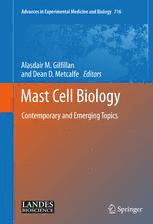
Mast Cell Biology: Contemporary and Emerging Topics
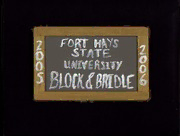
FHSU Block & Bridle Club Scrapbook: 2005-2006
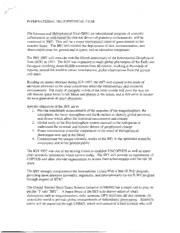
NASA Technical Reports Server (NTRS) 20050241962: International Heliophysical Year
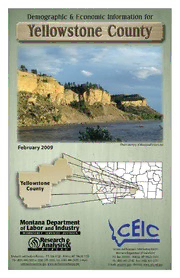
Demographic & economic information for Yellowstone County
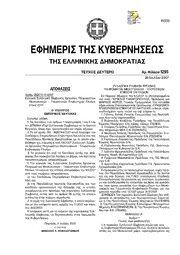
Greek Government Gazette: Part 2, 2007 no. 1295

Modern Drummer Issue 381

bölge planı tanımı ve planın hazırlanma süreci 7

böbrek yetmezliği ve diyaliz aciller
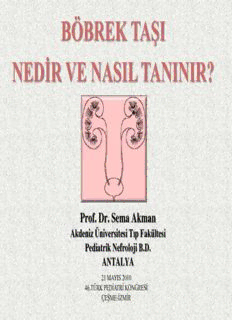
böbrek taşı nedir ve nasıl tanınır?

Bette Midler: Still Divine

Les tribulations d'un chinois en Chine by Jules Verne
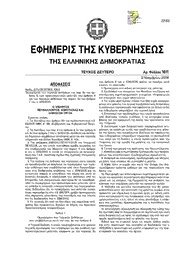
Greek Government Gazette: Part 2, 2006 no. 1611
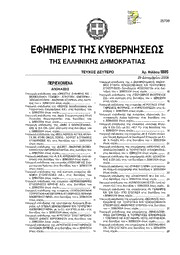
Greek Government Gazette: Part 2, 2006 no. 1885

Cada hora muere una persona por culpa del tabaco en Andalucía
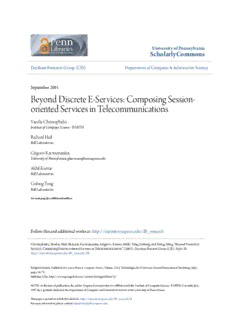
Beyond Discrete E-Services

